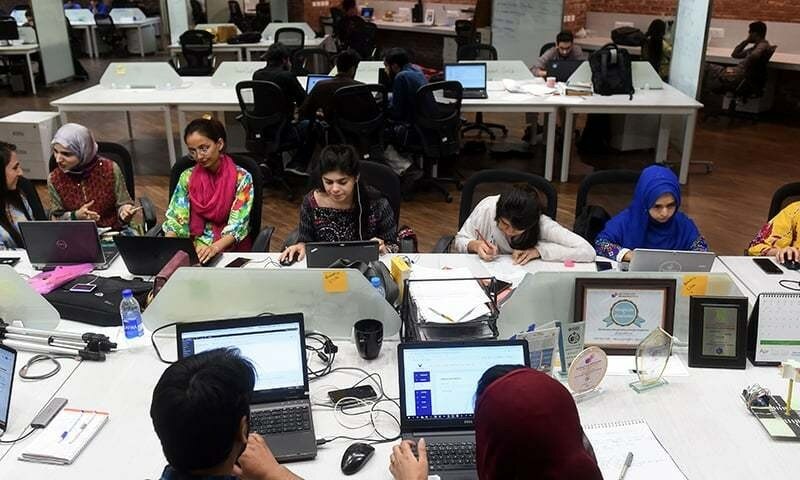By Usman Hayat
Published in DAWN on December 23, 2021
Twenty years ago, Ayesha secured a job as a management trainee in the finance department of a company after completing her MBA. A lot has happened in Ayesha’s life since then: she got married, had children, was promoted, lost her parents, survived Covid-19 and much more.
But during the ups and downs of Ayesha’s life, her job provided her with a steady income, health insurance, maternity leave, daycare facilities, access to credit and also helped to boost her professional network, personal development and self-confidence.
In turn, Ayesha’s employer found a dependable worker who could be trusted with important matters year after year. Balancing her personal and professional life was exhausting for Ayesha, but she was acutely aware of the fact that she, as well as her family, would be worse off if she did not have a job.
There are scores of women like this hypothetical Ayesha that are working for different companies across Pakistan at different positions. But the exact number remains elusive.
That’s because most companies, including those listed on the Pakistan Stock Exchange (PSX), publicly disclose little, if any, information about women in the corporate workforce despite making tall claims about their commitment to diversity.
Consider MCB Bank’s 2020 annual report which won an award for being the overall best corporate and sustainability report.
It states that the proportion of female staff was 15.8 per cent in 2019 and 16.3pc in 2020. It also said that the “representation of women in senior management positions stood at 16pc” with “20 female staff members reporting directly” to departmental heads who report to the chief executive officer (CEO).
While the data is meaningful, it is scanty. It omits important aspects such as the ratio of remuneration of women to men in the same level of employment.
Many other listed companies disclose no data — that’s right, nothing! — about women in the workforce.
So, what can be done to change things for the better?
The State Bank of Pakistan (SBP), has chosen to make a hard intervention in favour of women employed at the financial institutions that it regulates.
The central bank’s September 2021 circular sets challenging targets of growth in the proportion of women in the workforce, which also covers women-focused financial services and their delivery. The coming year will be the first year of its implementation and over time we will find out how it works out in practice.
But what can be done for companies at large?
The total number of companies in the country is 160,000, which includes many of the largest employers and taxpayers. Every company is different and changes over time. They may also not have any hard targets for growing the proportion of women in the workforce.
The objective is not that companies start firing men and hiring women, perhaps at a lower pay, to push up their gender diversity ratio and earnings per share.
The objective is simply to find out where we stand with respect to women in the corporate workforce and what can be done to improve the scale and quality of their participation to everyone’s advantage.
Under the Companies Act 2017, the Securities and Exchange Commission of Pakistan (SECP) has the powers to introduce such disclosure requirements for public interest companies.
A useful reference point for setting standardised disclosure requirements is the GRI Sustainability Reporting Standard, GRI 405: Diversity and Equal Opportunity.
The disclosure should focus on actual data in a standardised format. The required data may start from the proportion of women across different categories of the workforce (regular, contract, etc).
It should also offer relevant information such as the average length of employment for women and their average remuneration as a ratio of the same for men.
It should also provide a summary of their education and qualifications, while also sharing the proportion of female job applicants and the proportion of fresh hires. It should also highlight the proportion of women in roles reporting directly to the CEO or the board.
It should also state the applicable maternity leave law, such as the Sindh Maternity Benefit Act 2018. It should also make it known if there are flexible or remote working conditions, as well as other facilities provided by the employer, such as transportation, which help women participate in the workforce.
Compared to the complex financial reporting standards, the proposed disclosure is simple to understand and implement in a company’s annual reports and regulatory filings.
Once the data starts coming in, it will be possible to aggregate and analyse it, and then come up with useful insights for all stakeholders. One important area of analysis would be to find successful models of flexible working conditions that enable women to balance their personal and professional lives.
“Women are a major reason we will do so well,” Warren Buffett, the legendary investor, said back in 2013 on the prospects of the US economy.
The US Securities and Exchange Commission has introduced principles-based human capital disclosure. However, it is mandatory for companies to report diversity data to the Equal Employment Opportunity Commission.
According to the International Labour Organisation (ILO), the female labour force participation rate is about 56pc in the US versus 25pc for Pakistan against a global average of 49pc. If the US stands to gain from greater participation by women, Pakistan stands to gain much more.
In the 2021 Global Gender Gap Report, Pakistan is ranked 153 with only three war-torn countries behind it, namely Iraq, Yemen, and Afghanistan.
Getting to know where our women stand in the corporate workforce is a step towards sustainable economic growth. One we should take without further delay.






